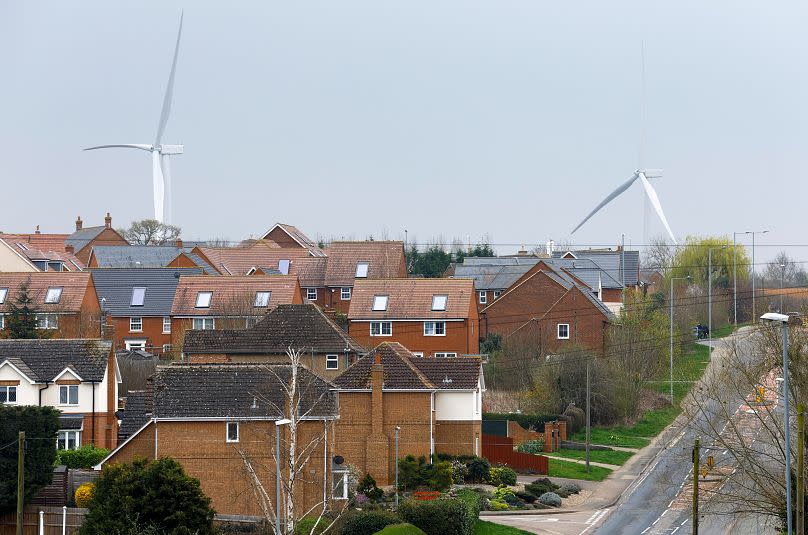England built just two onshore wind turbines in 2022: What needs to change?

Only two onshore wind turbines were built in England last year, according to trade body RenewableUK.
Across the UK, a total of 10 onshore projects were installed - six in Scotland, two in Northern Ireland, one in Wales and one in England. Together they generate enough energy to power 209,000 homes.
In contrast, more than ten times as much offshore wind capacity was installed in the UK in 2022. RenewableUK says a total of 3.51GW of new offshore wind energy was added - enough to power more than 3.4 million homes. This figure smashed a previous record set in 2018.
So what’s going wrong with onshore wind farms?
Major milestone for EU energy: Wind and solar produced more electricity than gas in 2022
Europe’s climate in data: Everything from heatwaves to the cost of disaster
A ‘de facto’ ban on onshore wind farms
The planning system is a major barrier to speeding up the UK’s shift away from fossil fuels and imported energy, according to experts.
Nowhere is the problem with planning more evident than in onshore wind farms.
“In England, there has been a de facto ban on onshore wind since 2015,” explains James Robottom, head of onshore wind at RenewableUK.
It was part of former Prime Minister David Cameron’s pushback on so-called ‘green crap’.
The planning policy means that proposals for one or more wind turbines need to meet two criteria: they must be located in an area identified by local authorities as suitable for renewable projects and they must have consent from the local community.

Though these requirements empower communities to have more of a say over what is built in their area, it has caused onshore wind farm installation to stagnate.
Very few local authorities in England have designated areas for renewable development. Just 11 per cent according to research from the University of West England.
And, Robottom says, “any impact has to be fully assessed. That means one person in a local area can object and the whole wind farm goes.”
What is the UK government doing to solve the problem?
A consultation is currently underway to attempt to remove these planning roadblocks and allow projects where there is enough local support. The government’s own polling shows that four-fifths of the UK public support onshore wind.
It is also seeking opinions on whether communities that back onshore wind should get lower energy bills.
Conservative lawmaker Simon Clarke, who led calls for change, celebrated on Twitter when the consultation was announced in December.
“Really pleased to see a sensible agreement reached this evening which will enable onshore wind to be delivered while enshrining the vital principle of community consent,” he said.
Planning reforms are underway in Scotland, Wales and Northern Ireland too.
Installing solar panels on these family homes led to spare cash and more free time
Wind and power projects in Germany could be approved faster under new measures
‘Substantial changes’ are needed to planning laws
RenewableUK believes there needs to be “substantial changes” to the planning system to improve the “glacial pace” of onshore wind installation.
But Robottom says the footnotes in the government’s proposed new wording for planning laws are even “more complex and more confusing”.
He adds that the government's ambition for renewable power is also nowhere near the recommendations of reports like the Skidmore Review - a plan that outlines the path to net zero for the UK.
This confusion means it is difficult to know what the situation with onshore wind will be in the future.
“If I was looking to invest in onshore wind in England, I just wouldn’t,” Robottom says.

 Yahoo News
Yahoo News 
